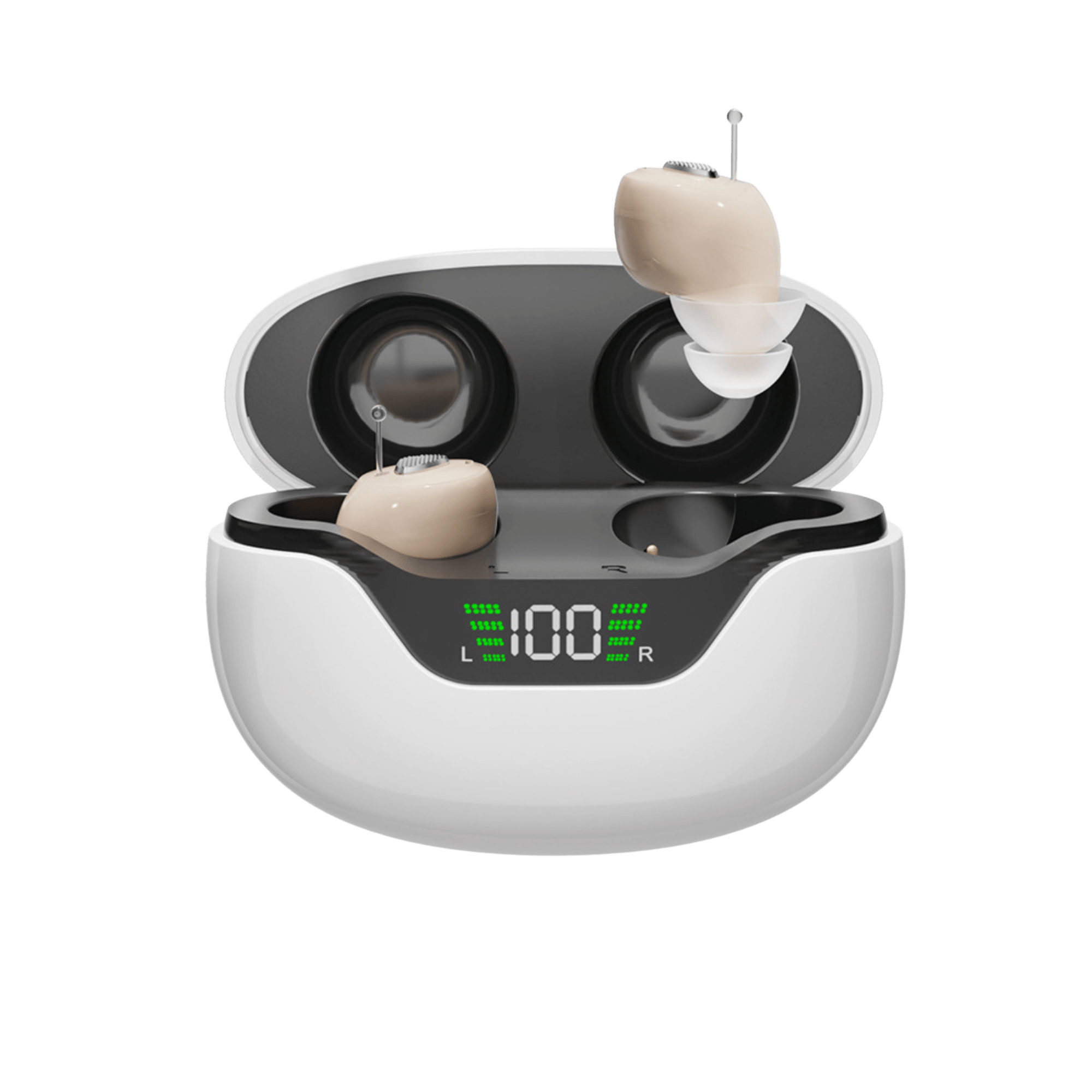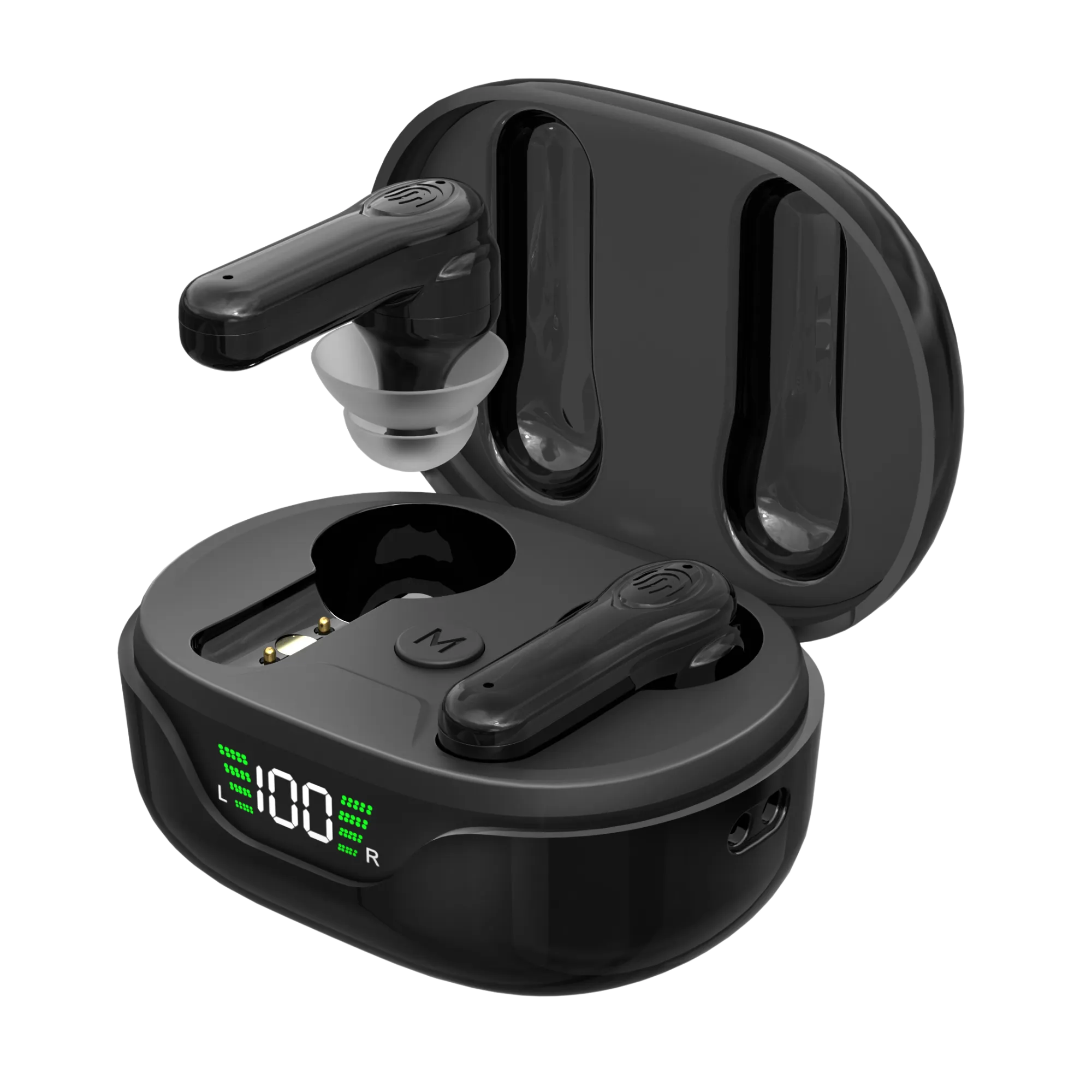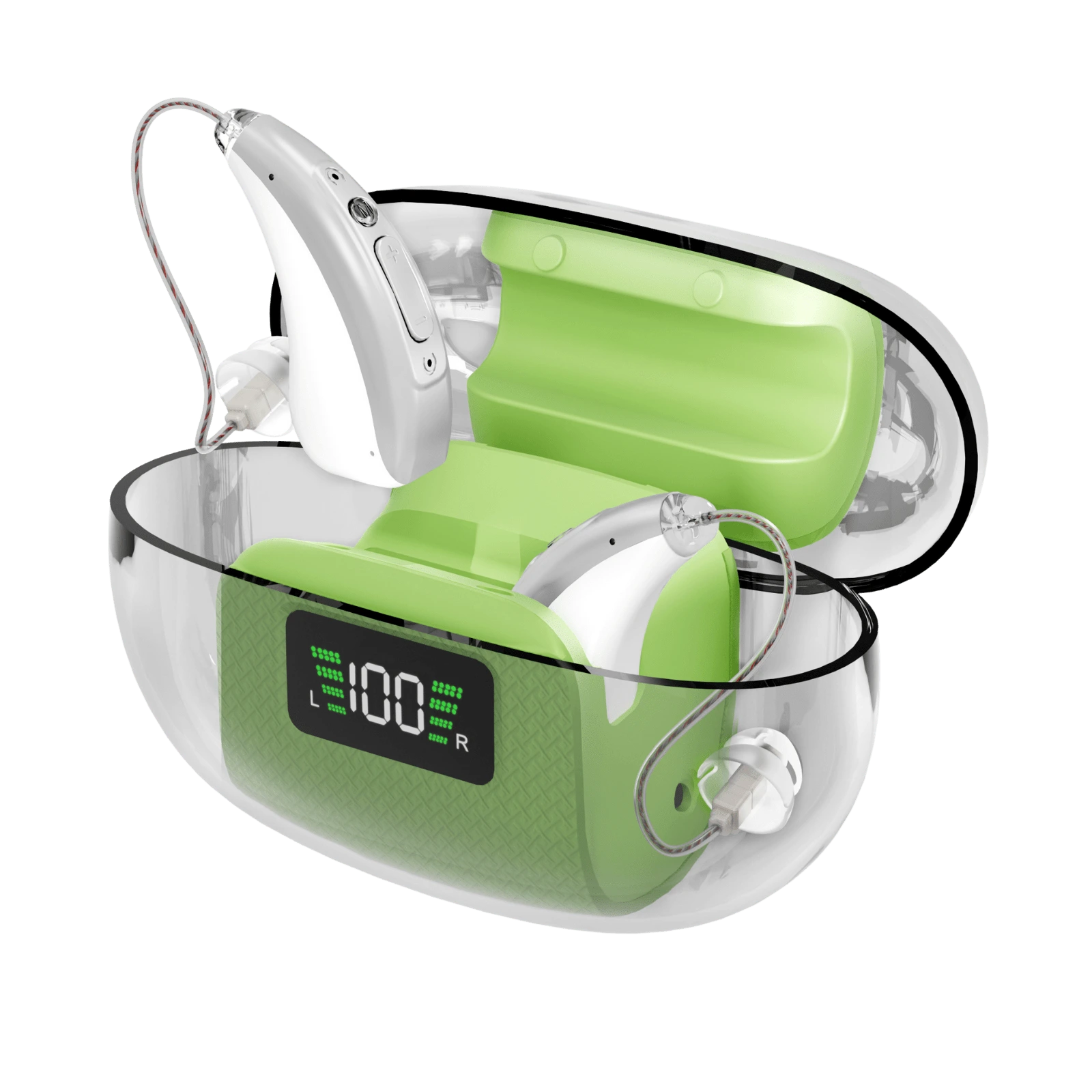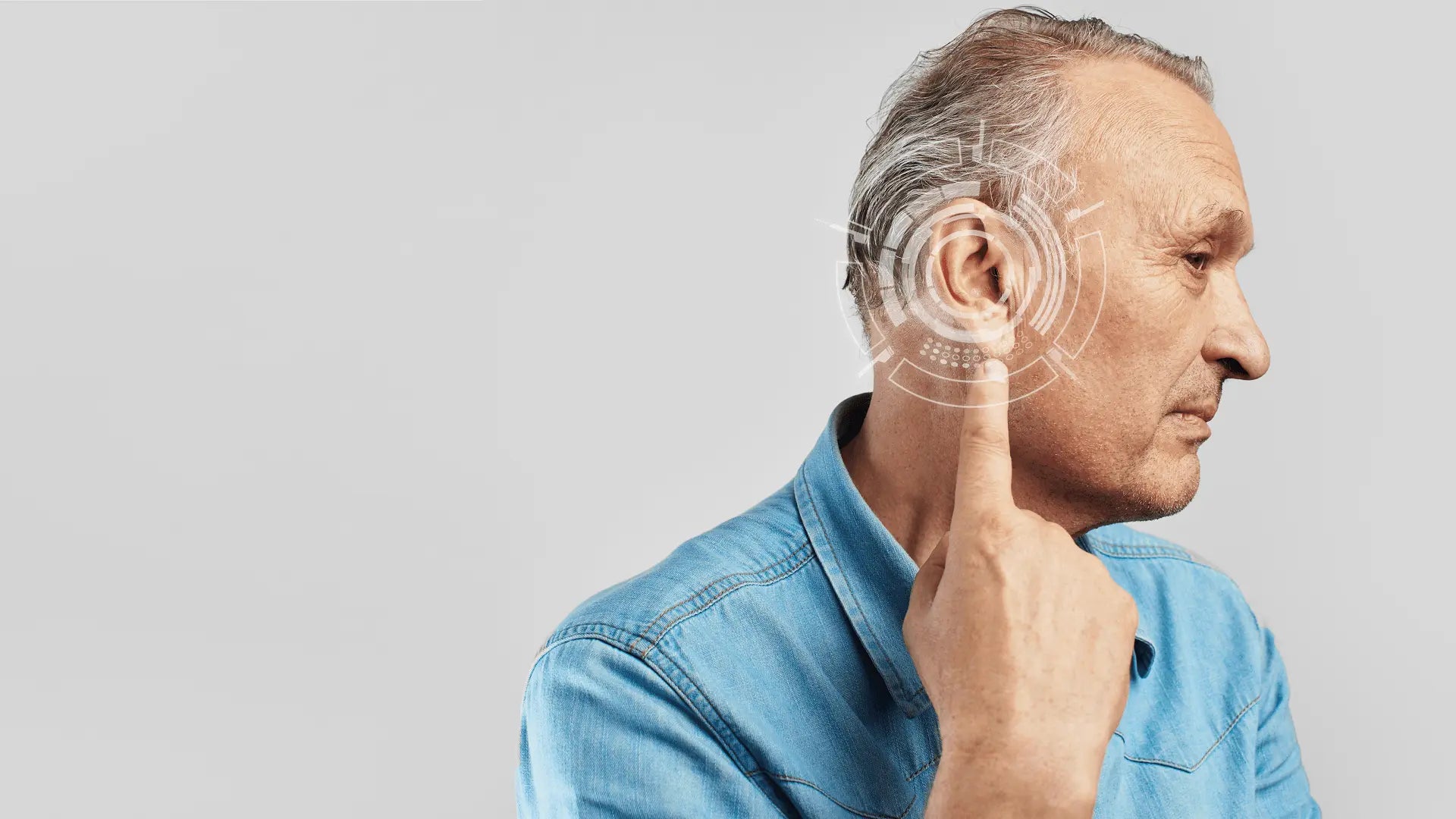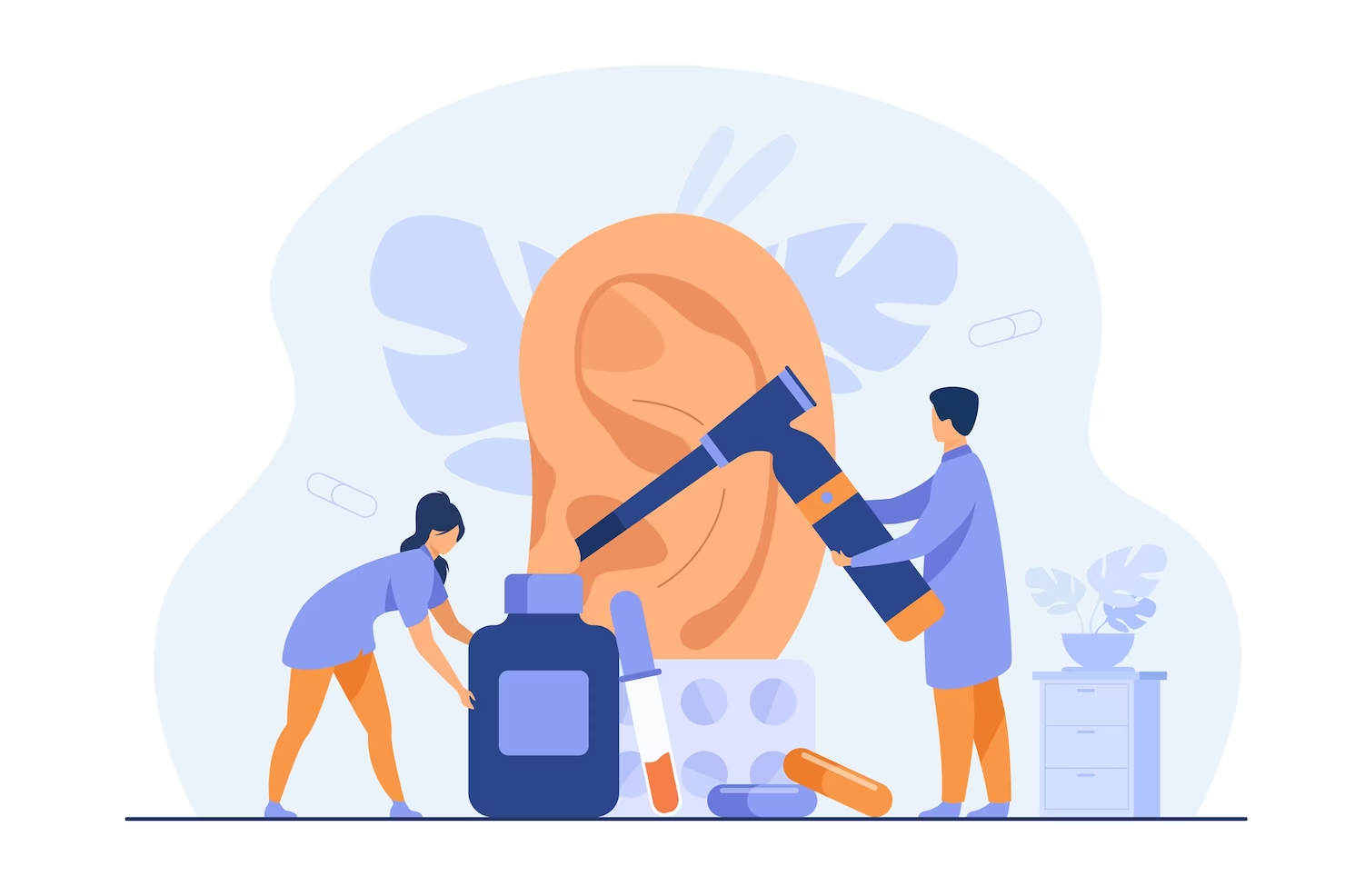Hearing Aids 101: How to Use Them Effectively is Your Guide
Millions of people around the world need hearing aids to help them understand the world of sounds. These tiny devices can have a big effect on the quality of life, how people talk to each other, and their general health and well-being. But how do you use a hearing aid? If you or someone you care about is thinking about getting hearing aids, this complete guide will help you learn how to use them well.
Getting Started: Adding and Taking Away
The first thing you need to do to use a hearing aid is learn how to put it in and take it out correctly. For behind-the-ear (BTE) types, this means putting the main device behind your ear and putting the earmold or ear tip into your ear canal. Devices that go in the ear or ear canal are called in-the-ear (ITE) or completely-in-canal (CIC).
For the best sound quality and comfort, you must make sure the hearing aid is put in properly. You'll also need to know how to safety remove the device without breaking it. During your first hearing test, the person helping you will show you how to do these things.
Changing the settings and volume
Most modern hearing aids change the sound automatically based on where you are listening. But many gadgets still have manual volume controls that can be used to make small adjustments.
Also, hearing aids can be set up with different settings or programs for different listening situations. For example, one setting might improve speech in noisy places, while another might be made for quiet talks between two people. Some hearing aids can quickly switch between these settings, while others need to be changed by hand.
To get the most out of your hearing aids, you need to know how to use these settings. Again, your hearing care professional will show you how to do this when they fit and show you how to use your new hearing aids for the first time.
Cleaning and Repairs
Cleaning and maintaining your hearing aids on a daily basis is very important if you want them to work well. Most of the time, this means using a soft brush or cloth to remove earwax or other waste from the device and looking for signs of damage. If your device uses batteries, they will need to be changed often. If your hearing aid can be charged, it will need to be charged every day.
Some parts of the hearing aid, like the ear molds or ear tips, can often be taken out and cleaned individually with water and mild soap for a more thorough cleaning. Always make sure they are completely dry before putting them back on.
Don't get the electrical parts of your hearing aid wet, and when you're not wearing them, keep them in a dry, cool place. In more wet places, a storage case that gets rid of moisture can be helpful.
Getting in sync with other gadgets
Modern hearing aids often have Bluetooth, which lets them connect to other devices like smartphones, computers, and TVs. This feature lets you stream phone calls, music, podcasts, or TV sound straight into your hearing aids, making it easy to listen to all of these things at once.
Connecting to Bluetooth devices will be different for each device. Usually, you'll need to go into the settings of your phone or computer and pair it with your hearing aids. If your hearing aid has this feature, a hearing care worker will help you pair it with your phone.
Appointments for Audiology
Even if you use and care for your hearing aid correctly, you'll still need to see a hearing care provider on a regular basis. At these visits, your hearing aids will be checked out, any repairs or adjustments will be made, and your hearing needs will be reevaluated.
Using hearing aids in daily life
Patience and regularity are the most important parts of using hearing aids. Getting used to new hearing aids can take some time. At first, sounds may seem too loud or strange because your brain is not used to hearing them at that frequency. The faster you get used to your hearing aids, the more often you should wear them.
Remember that hearing aids can't bring your hearing back to normal, but they can make it much easier for you to talk to people and understand what's going on around you. Use them often, take good care of them, and see your hearing care provider regularly. If you do this, you'll be on your way to getting the many benefits that hearing aids can offer.
In the end, there's more to using hearing aids than just putting them in your ears. It means learning how to change settings, clean and keep the device, and possibly sync it with other devices. It also means going to regular appointments with an audiologist. With practice, patience, and help from a professional, you can make it through this journey to better hearing.
Millions of people around the world need hearing aids to help them understand the world of sounds. These tiny devices can have a big effect on the quality of life, how people talk to each other, and their general health and well-being. But how do you use a hearing aid? If you or someone you care about is thinking about getting hearing aids, this complete guide will help you learn how to use them well.
Getting Started: Adding and Taking Away
The first thing you need to do to use a hearing aid is learn how to put it in and take it out correctly. For behind-the-ear (BTE) types, this means putting the main device behind your ear and putting the earmold or ear tip into your ear canal. Devices that go in the ear or ear canal are called in-the-ear (ITE) or completely-in-canal (CIC).
For the best sound quality and comfort, you must make sure the hearing aid is put in properly. You'll also need to know how to safety remove the device without breaking it. During your first hearing test, the person helping you will show you how to do these things.
Changing the settings and volume
Most modern hearing aids change the sound automatically based on where you are listening. But many gadgets still have manual volume controls that can be used to make small adjustments.
Also, hearing aids can be set up with different settings or programs for different listening situations. For example, one setting might improve speech in noisy places, while another might be made for quiet talks between two people. Some hearing aids can quickly switch between these settings, while others need to be changed by hand.
To get the most out of your hearing aids, you need to know how to use these settings. Again, your hearing care professional will show you how to do this when they fit and show you how to use your new hearing aids for the first time.
Cleaning and Repairs
Cleaning and maintaining your hearing aids on a daily basis is very important if you want them to work well. Most of the time, this means using a soft brush or cloth to remove earwax or other waste from the device and looking for signs of damage. If your device uses batteries, they will need to be changed often. If your hearing aid can be charged, it will need to be charged every day.
Some parts of the hearing aid, like the ear molds or ear tips, can often be taken out and cleaned individually with water and mild soap for a more thorough cleaning. Always make sure they are completely dry before putting them back on.
Don't get the electrical parts of your hearing aid wet, and when you're not wearing them, keep them in a dry, cool place. In more wet places, a storage case that gets rid of moisture can be helpful.
Getting in sync with other gadgets
Modern hearing aids often have Bluetooth, which lets them connect to other devices like smartphones, computers, and TVs. This feature lets you stream phone calls, music, podcasts, or TV sound straight into your hearing aids, making it easy to listen to all of these things at once.
Connecting to Bluetooth devices will be different for each device. Usually, you'll need to go into the settings of your phone or computer and pair it with your hearing aids. If your hearing aid has this feature, a hearing care worker will help you pair it with your phone.
Appointments for Audiology
Even if you use and care for your hearing aid correctly, you'll still need to see a hearing care provider on a regular basis. At these visits, your hearing aids will be checked out, any repairs or adjustments will be made, and your hearing needs will be reevaluated.
Using hearing aids in daily life
Patience and regularity are the most important parts of using hearing aids. Getting used to new hearing aids can take some time. At first, sounds may seem too loud or strange because your brain is not used to hearing them at that frequency. The faster you get used to your hearing aids, the more often you should wear them.
Remember that hearing aids can't bring your hearing back to normal, but they can make it much easier for you to talk to people and understand what's going on around you. Use them often, take good care of them, and see your hearing care provider regularly. If you do this, you'll be on your way to getting the many benefits that hearing aids can offer.
In the end, there's more to using hearing aids than just putting them in your ears. It means learning how to change settings, clean and keep the device, and possibly sync it with other devices. It also means going to regular appointments with an audiologist. With practice, patience, and help from a professional, you can make it through this journey to better hearing.

